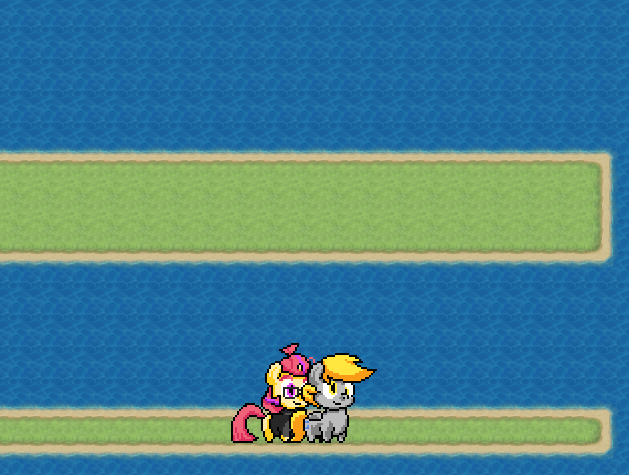Let’s talk about game design. Rather, let’s talk about a certain game design “philosophy”- The Marriage of Game Mechanics and Narrative.
Instead of referring to a ceremony with puffy dresses and stuff, this use of the word marriage here basically means “tying” these 2 concepts in game design together to facilitate an experience that both contributes to the player’s immersion with the game world and have the player think and interact in depth with the mechanics without the player even realizing it.
Fancy language aside, by designing your game’s mechanics around this philosophy, you would probably lessen the disconnect the player would feel during play when they start to see the rules and limitations of the game AS they are. A perfect example of this disconnect would be in Pokemon, in any of the games, HMs are a necessary part of navigating the world, but in terms of battle (the primary method of encounters) HMs are mostly not very viable.
So what do some trainers do?
Assign a HM slave of course!
Just pop in to the nearest patch of grass and catch yourself a Bidoof and BOOM. You got a wild animal to delegate all your navigational needs to. But is this what Pokemon as a game, wants you to do? Pokemon really sells the experience of being a pokemon trainer, someone who works in tandem with pokemon to be the very best, yada yada, but the way this human-pokemon relationship is portrayed in game is massively different from how we mechanically treat the encounter design.
“My Charizard has been my longtime companion and friend! And I’ve met so many other pokemon too!”
…
“Oh here’s Bidoof. He gets us around.”
“Scares away the Zubats too.”
From this, the player’s traversal on the map is trivialized in favor of freeing up your move slots for combat. That’s probably why there’s always some cognitive dissonance that comes whenever someone picks up a new pokemon game, the mechanics allow for endless grinding to strengthen your pokemon while the narrative usually puts you in contrast to the enemy Team that presumably uses pokemon forcefully or against their pokemon’s will; cuz really, what you’re doing is kinda similar when you break it down in reality. But to us, the player, we aren’t doing this out of malevolent intent (hopefully), we’re doing this because these mechanics are the tools the game gives us to experience the world and its narrative.
Now this isn’t to bash the Pokemon games for some flaws in design, in fact they sorta singlehandedly managed to carry the JRPG genre through the past 2 decades even when video games were going through different trends and dimensions. So to even it out, here’s an example of when Pokemon did live up to the Marriage of Mechanics to Narrative Philosophy.
Gary. Blue. Or Buttface, whatever you called your rival in the OG games, was a recurring combat encounter that would often show up as your were visiting different cities. What made his encounters so different from every other encounter was that he was basically setting up a benchmark for you to shape up your team to as it’s a requirement to fight him multiple times throughout the game, each time progressively getting harder and harder, and his team was probably as varied as yours was (minus the HM slave) so you had to meet that challenge on your own terms. Narrative-wise, he was your rival, always one step ahead and ready to but heads with you whenever you meet. While the game was training you to step up your level of play, you were wrapped in the narrative of 2 rival trainers keeping each other on their toes. To beat the game, you have to level up your pokemon and make a good team and a good test of that is to beat someone else with your team, thus unlocking the next area to explore. This is difficulty ramping taken to a more subtle level, and one of the best things about it is that it drew players into interacting with the game on that level because it was tied to a narrative approach to guiding someone through the game. Then your immersion with the game and its world creates a more enjoyable experience, which is really what most game designers want out of the player. And the best part about it was that the player was self-motivated to follow through with it.
That’s what’s up.
PS The school year has started once again so that takes up a chunk of my time throughout the week, but I hope to keep up with the updates on game development as much as I can. Thanks!
